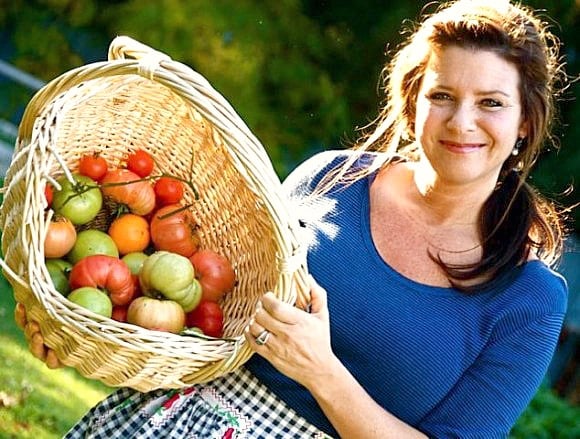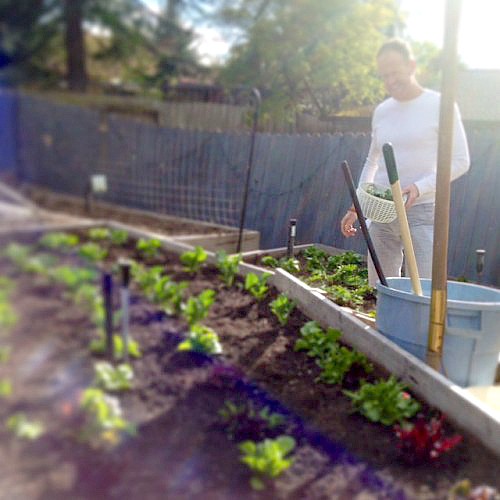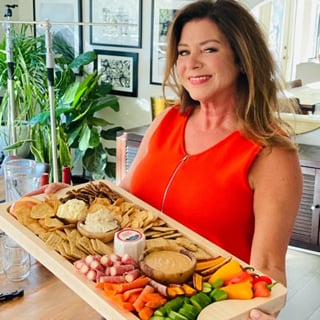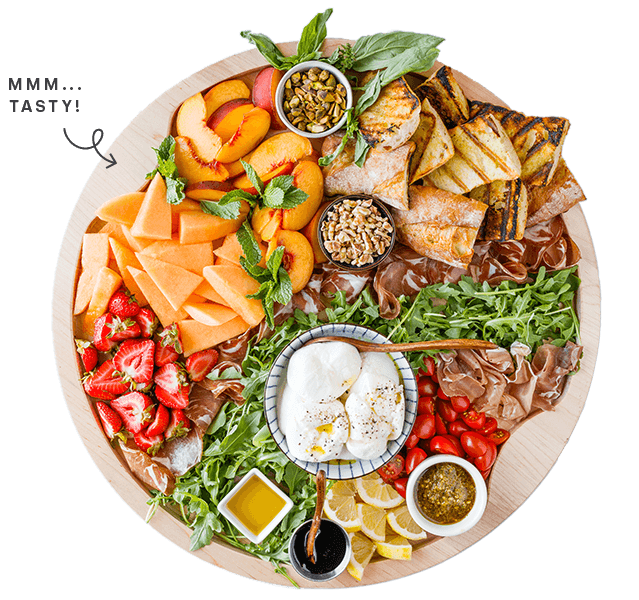Every Day Should be Earth Day

Because I am thankful for the provision we’ve been given, I celebrate Earth Day! :)
… on April 22, 1970, Earth Day was held, one of the most remarkable happenings in the history of democracy … -American Heritage Magazine, October 1993
I first began to learn and understand what Earth Day was in the Spring of 1970, when I was almost 7 years old.
I was in 2nd grade when I entered a contest of “drawing and coloring the world” with colored pencils. To my surprise, at my grade school in Central Point, Oregon, I was awarded first place at our school assembly! I won a $25 gift certificate to a local credit union, which at that time was a lot of money. :)
Since then I’ve taken Earth Day to heart. I’ve learned that by preserving the environment, Earth Day is a great opportunity for eaters, farmers, and food businesses to make changes in their shopping, gardening, diets, cooking, and so much more that promotes sustainable, healthy food and living throughout the year.
So it affects each one of us!
“The rise of processed foods and a push for high yield, single-crop farms, is leading to not only soil degradation and water scarcity, but also unhealthy consumers,” says Ellen Gustafson, co-founder of Food Tank.
It sounds so big, but each one of us can start small.
For our family we recycle and we grow our own vegetables and fruit. And from there, it trickles down to our 3 meals a day. The choices that we make with our food is where every American can protect the environment with the choices we make with our food.

Here are 13 recommendations from Food Tank for ways to support the future of food, health, and agriculture:
Eat more colors
The colors of fruits and vegetables are signs of nutritional content. A richly-colored red tomato has high levels of carotenoids such as lycopene, which the American Cancer Society reports can help prevent cancer, as well as heart disease. The relationship between nutrients and color is also true for other foods. Eggs that have brightly orange-colored yolks are also high in cancer-fighting carotenoids, and are more likely to be produced by healthier chickens.Buy food with less packaging
Discarded packaging makes up around one-third of all waste in industrialized countries, with negative impacts on the climate, and air and water quality. The U.S. Environmental Protection Agency’s analysis of different packaging for tomatoes found that polyethylene terephthalate (PET) clamshell packaging increases tomatoes’ associated carbon emissions by 10 percent. The most effective way to limit the impact of packaging waste is to prevent it. Choosing foods with less packaging can also be better for our waistlines, since highly processed foods that are low in nutrients generally use more packaging than more healthful, less processed options.Choose seasonal produce
Earth Day offers a great opportunity to bring more seasonal fruits and vegetables into diets. Many farmers markets, including the New York City Greenmarkets, offer guides about which products are in season. Locally sourced, seasonal products can also be found at major grocery stores. Another way to get seasonal foods is to sign up for a weekly CSA, which provides a mix of fresh, seasonal produce throughout the year. Other programs, such as Siren Fish Co.’s SeaSA in San Francisco, offer seasonal meats and seafood.Get in touch with agriculture
This time of year, many people are starting to plan vacations. A great way to skip the crowds, save money, and get both children and adults in touch with agriculture is to book a farm-stay through World Wide Opportunities on Organic Farms (WWOOF). WWOOF runs networks in most countries around the world, offering individuals and families the opportunity to directly support small-scale family farmers. Participants spend a few days or weeks living with a host family and helping with tasks around the farm in exchange for free food and lodging.Get creative in the kitchen
Shopping at farmers markets, which often have a wide selection of less-ordinary produce such as celeriac, sunchokes, or kohlrabi, can prevent “food ruts” by helping consumers try new foods. When looking for inspiration, many popular recipe blogs, such as smitten kitchen, allow users to search by ingredient, as well as season.. Publications such as Diet for a Small Planet and the Boston Globe’s new Sunday Supper and More e-cookbook series also offer tips on reusing leftovers to reduce food waste.Invest in perennial crops
Perennial plants—plants that grow back every year—tend to hold water in soil more effectively than annuals and help prevent erosion. Their extensive roots also allow them to better access nutrients and water, reducing the need for artificial fertilizer. Researchers from the University of Illinois found that perennial prairie grasses are up to four times as water efficient as row crops such as corn and wheat. The Land Institute works to breed perennial varieties of corn, wheat, rice, and other annual crops.Reclaim abandoned spaces
As populations continue to expand, especially in cities, reclaiming unused land and buildings for food production can help meet growing demand. One new model is The Plant, a former meatpacking plant in Chicago that has been converted into an indoor vertical farm. The Plant currently runs an aquaponics farm, growing plants without soil using waste from its man-made tilapia pools. It also offers shared kitchen space for small businesses, and other services.Build local and global food communities
A great way to get involved in food and agriculture issues is with Slow Food International, an organization with more than 1,300 groups around the world called convivia. These groups support healthy, sustainable diets and traditional food cultures. In addition to local initiatives, Slow Food convivia also arrange regional and international events on important food and agriculture issues, such as Slow Food València’s recent conference on the influence of food in health and disease.DIY
Many Do-It-Yourself (DIY) food projects are easy and fun. Turning old t-shirts into produce bags to save plastic, starting seeds in eggshells, which can then be crushed for transplanting into the soil, and DIY foods such as homemade oat or almond milk can all add a creative twist to healthy eating and sustainable agriculture. Plus, they are lots of fun for families.Cook in batches and freeze for later
Planning meals in advance can help reduce stress around cooking. It also helps reduce food waste, which is a big problem in industrialized countries A great way to reduce waste and make planning easy is to cook large batches of a single meal, such as soups or curries, which can be frozen and reused on short notice later in the week. Preparing large amounts of food at once saves energy during cooking, while freezing helps prevent nutrient loss in fruits and vegetables. For those days when there is more time to cook, tools such as Love Food Hate Waste menu planner shopping list can help organize grocery trips.Brighten your outlook
At the recent Warwick Economics Summit in February, Warwick University Economics Professor Dr. Andrew Oswald presented his research on health and happiness, focusing on the link between happiness and consumption of fruits and vegetables. His team of researchers found that eating more fruits and vegetables directly improves a person’s mental wellbeing, separate from other variables such as income level and how much meat a person ate. This research is supported by a similar study from the Harvard School of Public Health, which found a link between patients’ blood-level of carotenoids, compounds commonly found in colorful fruits and vegetables, and their feelings of optimism.Use crop rotation
Crop rotation is an important way to preserve soil nutrients, prevent erosion, and protect against crop diseases and pests. In the central Brazilian state of Mato Grosso, agronomists at Agro Norte have developed new varieties of rice and dry beans that are well suited to the region’s tropical climate. By incorporating rice and beans into their yearly harvests, local soybean farmers can reduce the spread of soybean rust and nematodes, two of the biggest threats to their crops. The system also improves soil quality and provides jobs at times when soy and corn are not harvested.Embrace conviviality around the table
Talking and laughing while sharing food is a uniquely human experience. Conviviality, joyful and friendly interaction, is found at markets and around the dinner table, and it supports healthy relationships and healthy bodies. The Barilla Center for Food & Nutrition considers convivial food culture one of the most critical aspects of food and agriculture, alongside health, hunger alleviation, and sustainable development. Researchers from Cornell University and the University of Minnesota agree, reporting that the reported benefits of family dinners on children’s mental health and achievement levels depend on engagement with their parents at these meals.
About Food Tank
Food Tank: The Food Think Tank (www.FoodTank.org), founded by Danielle Nierenberg and Ellen Gustafson, is a think tank focused on feeding the world better.

With our 14 raised beds (on a city lot), the longer we study natural living, nutrition and the body, and how things grow… the more the excited our family gets about gardening and growing our own food. Here’s my recent post, on finding the zone where you live, if you want to get started with raised beds!
We’ve been given the most amazing world to live in.
So my challenge is to try to live every day as if it were Earth Day.




